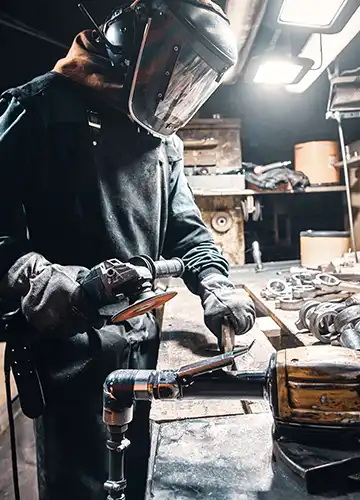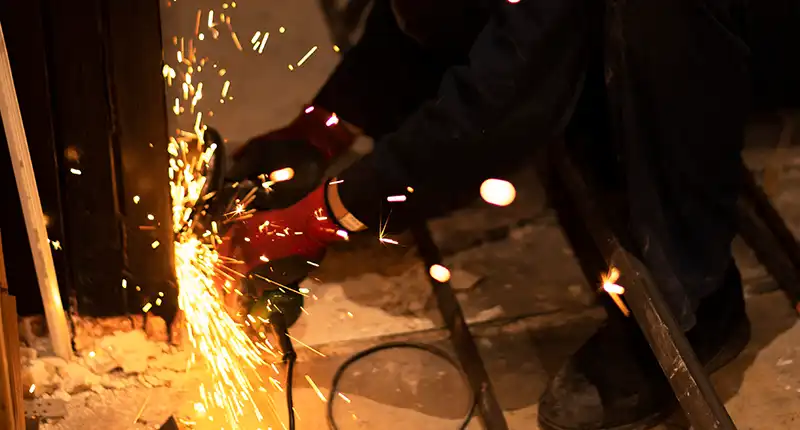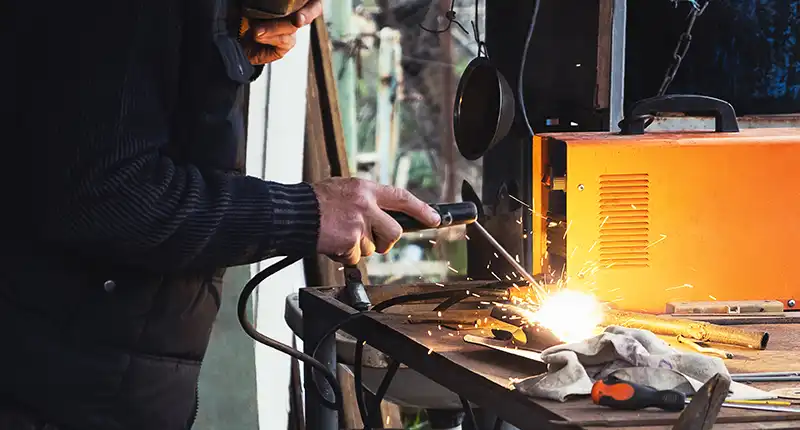- +971 43807099
- +971 563244963
- brisunco@emirates.net.ae
Edit Content

- Meet Us
Shed No. 10,
Fresh Express Warehouse, Road B1, DIP 1,
Dubai, UAE.

Shed No. 10,
Fresh Express Warehouse, Road B1, DIP 1,
Dubai, UAE.


New
New
Industrial welding and fabrication are highly specialized fields that form the backbone of numerous industries, from construction to automotive and beyond. The precision and strength inherent in quality metal work are undeniable, and at Brightsun Industries, we understand that achieving these standards goes hand in hand with an unwavering commitment to safety.
The nature of welding and fabrication involves significant hazards, making rigorous adherence to best practices not just important, but essential for protecting workers and ensuring operational integrity.
At a Glance

Before delving into best practices, it is crucial to acknowledge the array of hazards present in welding and fabrication environments. These include:
Welding is not about fusing metals; it is about the bond having enough strength to withstand stress, pressure, and time. It needs precision, skill, and an understanding of metallurgy.
Too little heat results in weak welds with poor fusion, while too much heat can lead to warping, brittleness, or porosity. Like cooking a steak, too rare and it lacks structural integrity; overdone, and it becomes brittle and unusable.

A proactive approach to safety is fundamental in any welding and fabrication shop. Implementing these best practices helps mitigate risks and fosters a culture where safety is paramount.
1. Comprehensive Personal Protective Equipment (PPE)
Proper PPE is the first line of defense for every worker in welding and fabrication. Each piece plays a vital role in protection. This includes wearing a welding helmet with an appropriate shade lens to shield eyes and face from intense light and sparks. Safety glasses or goggles should always be worn underneath the helmet for continuous eye protection from debris. Flame-resistant clothing made of materials like leather or heavy cotton is essential to protect the body from sparks and burns, ensuring full coverage with no cuffs that can trap hot materials. Heavy-duty, heat-resistant gloves are necessary to protect hands. Steel-toed boots protect feet from falling objects and punctures. Additionally, hearing protection, such as earplugs or earmuffs, is critical to prevent noise-induced hearing loss.
2. Robust Ventilation and Fume Extraction
Controlling exposure to hazardous fumes and gases is critical. Adequate ventilation systems, including local exhaust ventilation (LEV) at the source of welding, are vital to extract fumes from the worker’s breathing zone. General workshop ventilation should also be sufficient to maintain good air quality throughout the facility. For work in confined spaces or with highly toxic materials, powered air purifying respirators (PAPRs) or supplied air respirators may be necessary to ensure a clean air supply to the worker.
3. Strict Fire Prevention and Hot Work Procedures
Given the high risk of fire, strict protocols are a must. Before any welding or cutting operation begins, the work area must be thoroughly inspected for flammable materials, and all combustibles should be removed at least 35 feet away. If removal is not possible, they must be adequately protected with fire-resistant blankets or shields. Fire extinguishers should be readily accessible, and personnel trained in their use. A fire watcher should be present during hot work operations, especially in areas with potential hazards, and for at least 30 minutes after work ceases to check for smoldering fires.
4. Electrical Safety Protocols
Electric shock is a serious concern. All welding equipment must be properly maintained, regularly inspected for damaged cables or faulty insulation, and correctly grounded. Welders should always wear dry gloves and ensure their work area is dry to prevent electrical conductivity. Never touch the electrode or metal parts of the electrode holder with bare skin or wet clothing when the circuit is live. Lockout and tag out procedures must be followed strictly during equipment maintenance or repair.
5. Safe Material Handling and Ergonomics
Handling heavy and often awkwardly shaped metal pieces requires careful attention to safety. Utilize mechanical aids like cranes, forklifts, and hoists for lifting and moving heavy materials, ensuring all lifting equipment is inspected regularly and its capacity is never exceeded. Workers should be trained in proper lifting techniques to prevent musculoskeletal injuries, and ergonomic considerations should be integrated into workspace design to reduce strain and fatigue. Maintaining clear aisles and organized storage areas prevents trips, falls, and injuries from falling materials.
6. Training, Supervision, and Culture
Ultimately, safety is built on knowledge and adherence. All personnel involved in welding and fabrication must receive comprehensive training on equipment operation, hazard recognition, emergency procedures, and the correct use of PPE. This training should be ongoing, with regular refreshers and updates on new safety protocols. Effective supervision ensures compliance and addresses unsafe practices promptly. Fostering a strong safety culture where employees feel empowered to report hazards and contribute to safety improvements is paramount for continuous risk reduction.

Safety in industrial welding and fabrication is not an afterthought; it is an integral part of operational excellence and a moral imperative. By prioritizing comprehensive PPE, robust ventilation, stringent fire prevention, strict electrical protocols, safe material handling, and continuous training, companies can create a secure working environment.
At Brightsun Industries, we believe that investing in these best practices ensures not only the well-being of our skilled workforce but also the consistent delivery of superior quality metal fabrication services.
For expert industrial welding and fabrication services with an unwavering commitment to safety, contact Brightsun Industries today.
Q1: What is “welder’s flash,” and how can it be prevented?
Welder’s flash, also known as arc eye, is a painful inflammation of the cornea caused by exposure to intense UV light from welding arcs. It can be prevented by always wearing a welding helmet with an appropriate shade lens and safety glasses or goggles underneath.
Q2: Why is ventilation so important in welding operations?
Ventilation is critical to remove hazardous fumes and gases produced during welding from the worker’s breathing zone and the general air, preventing respiratory problems, metal fume fever, and long-term health issues.
Q3: What should be done immediately if a fire starts in a fabrication shop?
In case of a fire, the immediate steps are to alert others, attempt to extinguish the fire with a readily available extinguisher if it is small and safe to do so, and if not, evacuate the area immediately and call emergency services.
Q4: How often should welding equipment be inspected for safety?
Welding equipment, especially cables, hoses, and electrical connections, should be visually inspected daily before use. More thorough inspections and maintenance should be conducted regularly by qualified personnel, following the manufacturer’s guidelines.
Q5: Are there specific safety standards for welding and fabrication in the UAE?
Yes, in the UAE, industrial safety, including welding and fabrication, is governed by federal laws such as UAE Federal Law No. 33 of 2021 regarding Labour Relations, along with specific local regulations from authorities like Dubai Municipality, ADOSH (Abu Dhabi Occupational Safety and Health Center), and Civil Defense, which emphasize risk assessment, PPE, and safe work procedures.
At a Glance
Related Blogs
Shed No. 10, Fresh Express Warehouse,
Road B1, Dubai Investments Park 1,
Dubai, UAE.
+971 43807099
+971 563244963
+971 503226480